SUMMARY
This is AI generated summarization, which may have errors. For context, always refer to the full article.
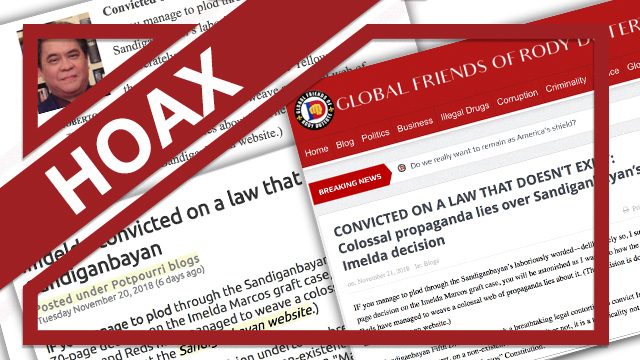
Claim: A Tuesday, November 20 post on the blog kahimyang.com, claims that former first lady Imelda Marcos was convicted by the Sandiganbayan based on a law that does not exist.
The post cites an opinion piece by Rigoberto Tiglao published in the Manila Times on November 21 as a source. The blog post was composed of portions of Tiglao’s piece, but not in full.
According to the blog post, the Sandiganbayan’s decision on Marcos is wrong because they did not prove that the money in the Marcoses’ Swiss bank accounts was acquired through corruption or the use of a government position.
It argues further that the Sandiganbayan’s decision is null because Marcos was found guilty of violating Republic Act (RA) 3019 (“Anti Graft and Corrupt Practices Act”), Section 3 (h) in relation to Article IX, Section 8, of the 1973 Constitution – a provision that has since been “deleted” from our current Constitution. Tiglao’s piece was also reposted on the website kamiangmedianidu30.group on November 21.Rating: FALSE
The Facts: Marcos was convicted based on provisions of the 1973 Constitution because the acts that she was convicted for were done under the 1973 Constitution, former human rights lawyer and Supreme Court spokesperson Ted Te explains. “Martial Law pa ‘to. There was no 1987 Constitution, so obviously, you are talking about the 1973 Constitution.”
Marcos was convicted of 7 counts of graft for creating and maintaining private foundations in Switzerland, violating the anti-graft law that prohibits public officials from having pecuniary interests in private businesses. (READ: Imelda Marcos verdict shows scheme to earn $200M from Swiss foundations)
The Sandiganbayan, in its decision, stated that Marcos was “prohibited by the Constitution or by any law from having any interest [in any business, contract, or transaction],” according to Article IX, Section 8, of the 1973 Constitution.
The 1973 Constitution states: “The Prime Minister, the Members of the Cabinet and the Members of the Executive Committee, shall be subject to the provisions of Section 11, Article VIII hereof and may not appear as counsel before any court or administrative body, or manage any business, or practice any profession, and shall also be subject to such other disqualifications as may be provided by law.”
Apart from this constitutional provision, the Sandiganbayan ruling also cites violation of Section 3 of the Anti-Graft and Corrupt Practices Act (RA 3019) which includes this provision in the list of corrupt practices of public officers: “Directly or indirectly having financial or pecuniary interest in any business, contract, or transaction in connection with which he intervenes or takes part in his official capacity, or in which he is prohibited by the Constitution or by any law from having any interest.”
Marcos was Minister of Human Settlements, governor of Metro Manila, and member of the interim Congress during the time the crimes were committed from 1968 to 1986.
In its decision, the Sandiganbayan presented as proof of “directly or indirectly having financial or pecuniary interest in any business, contract, or transaction” testimonies of witnesses who identified documents retrieved from sources. These include witnesses who recovered documents from Malacanang Palace after the Marcoses were exiled in 1986.
“The documents identified and authenticated bear proof of what they purport to be. The validity of the documents, presented and offered in evidence by the prosecution passed the scrutiny of the Court,” read the Sandiganbayan decision.
The Anti-Graft and Corrupt Practices Act (RA 3019), under which the Sandiganbayan convicted Imelda Marcos, remains in force. It is listed in the Ombudsman’s website, where a full copy can be found. – Vernise L. Tantuco/Rappler.com
Add a comment
How does this make you feel?
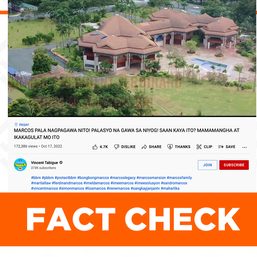
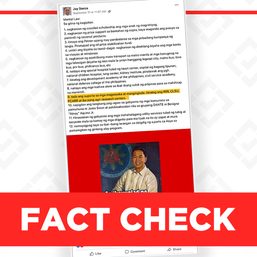

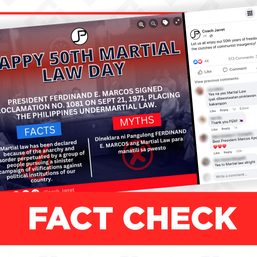
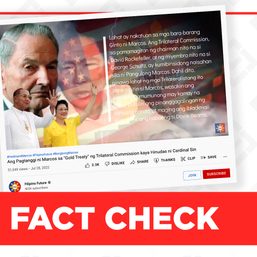
There are no comments yet. Add your comment to start the conversation.